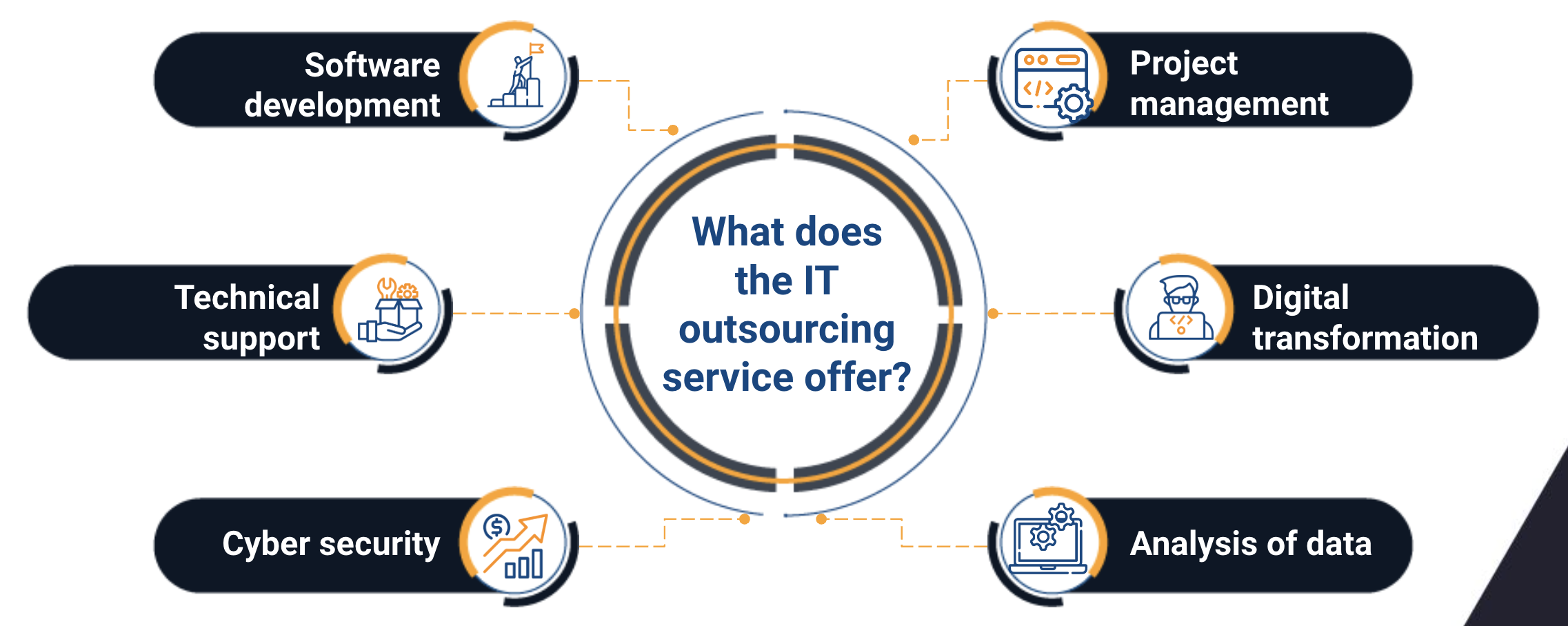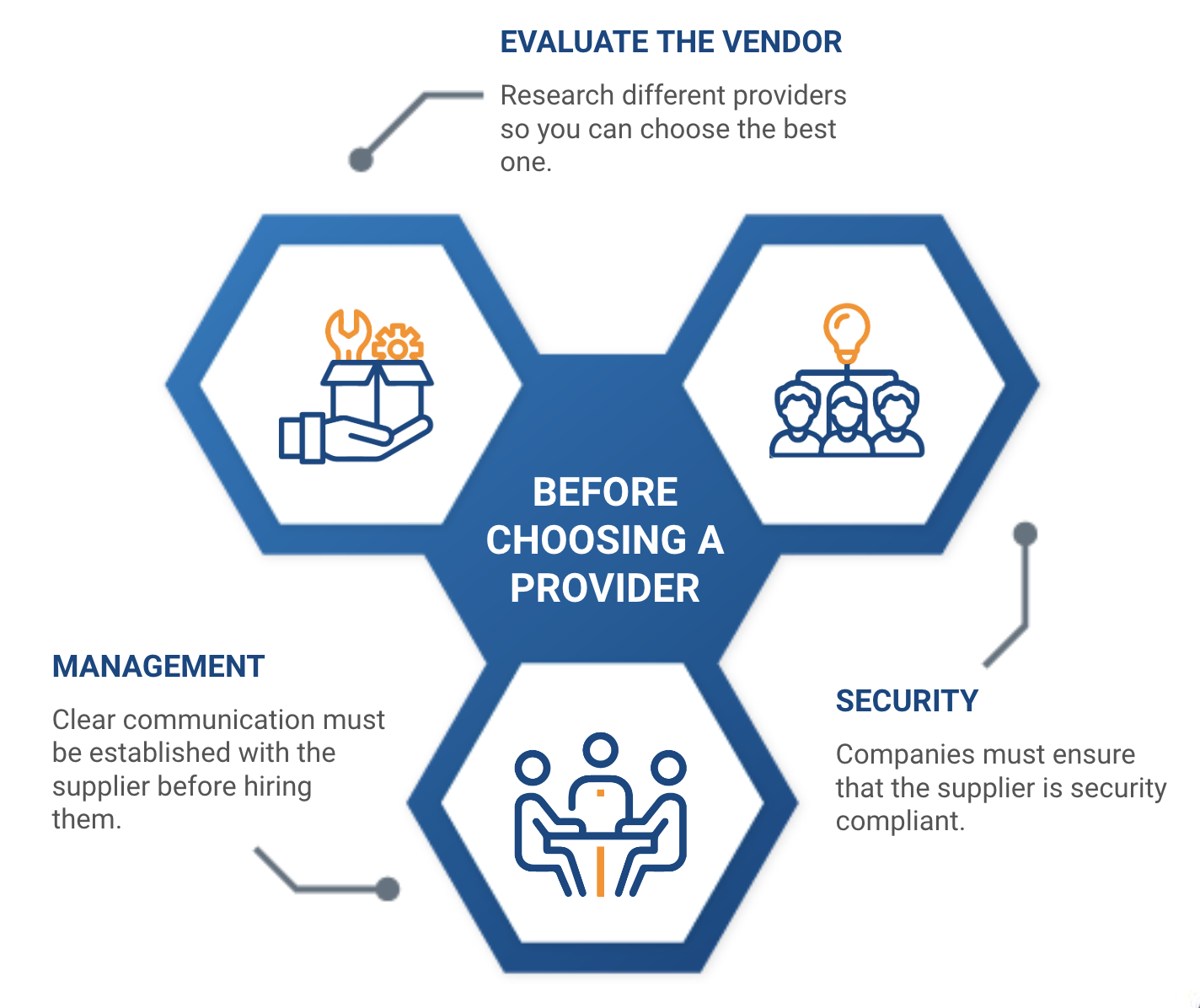
IT outsourcing is when a company hires outside IT service providers to handle some or all of its technology operations. This practice has become essential in the technology industry because of its ability to offer a number of significant advantages. However, understanding what is included in this service is essential to get the most out of IT outsourcing.
Essential components of IT outsourcing
1. Software development services
One of the fundamental pillars of IT outsourcing is software development. This includes creating custom applications, systems and software to meet the specific needs of an organization. External development teams can work on a variety of technologies and programming languages to create innovative and efficient solutions.
2. Project management and consulting
Project management and consulting are key elements of IT outsourcing. Third-party vendors often offer project management services that ensure projects are delivered on time and on budget. Additionally, IT consultants can provide strategic advice to help organizations make informed decisions about their technology initiatives.
3. Technical support and maintenance
Technical support and maintenance of systems and applications are critical components of IT outsourcing. Third-party providers can offer 24/7 support services, ensuring organizations can effectively resolve issues and minimize downtime.
4. IT infrastructure
IT outsourcing also encompasses the management of IT infrastructure, which includes servers, networks and storage. Organizations can use third-party providers to efficiently and cost-effectively maintain and update their technology infrastructure.
5. Cyber Security
Cybersecurity is a growing concern in the world of technology. IT outsourcing providers offer advanced security solutions to protect organizations' data and systems against cyber threats. This includes constant monitoring, threat detection, and response to security incidents.
6. Automation and digital transformation
Process automation and digital transformation are rapidly growing areas in the technology space. Outsourcing teams can find ways to automate tasks and improve processes, leading to more efficiency and lower costs.
7. Data analysis and Business Intelligence
Data analysis and business intelligence are crucial for making informed decisions. IT outsourcing teams can help organizations collect, analyze and present data effectively, enabling more strategic and data-driven decision making.

Advantages of IT Outsourcing
We have examined the important aspects of IT outsourcing. It is essential to mention the advantages it offers to tech companies and how they can maximize its potential.
Access to specialized skills
One of the biggest advantages of IT outsourcing is the ability to access highly specialized talent. Third-party vendors often have teams of experts in various areas of IT, allowing organizations to tackle complex projects with confidence.
Costs reductions
“One of the most obvious benefits of IT outsourcing is that it can reduce the costs of maintaining an in-house IT department. By outsourcing, you can avoid expenses such as salaries, benefits, training, equipment, and office space for IT staff", they noted in a LinkedIn article.
"You can also access lower rates from suppliers in different regions or countries, especially if you opt for offshore outsourcing. Additionally, you can save on operating costs by paying only for the services and resources you need, and scaling up or down as your demand changes”, they added.
Flexibility and scalability
Flexibility and scalability are critical components in the technology industry. With IT outsourcing, organizations can scale their IT resources as needed, making it easier to adapt to changing market demands.
Focus on Core Business
By outsourcing IT activities, companies can focus on their core competencies and innovation. This allows for a strategic focus on business growth rather than worrying about technology management.
Important considerations before choosing an IT outsourcing provider
IT outsourcing has many benefits, but technology leaders need to think about important things before starting this strategy.
1. Selecting the right supplier
Choosing the right IT outsourcing provider is crucial. Research and evaluate suppliers to make sure they have the experience, reputation, and ability to meet the organization's goals.

2. Effective supplier relationship management
Effective management of the relationship with the supplier is essential for the success of IT outsourcing. We must establish clear and regular communication, and it is essential to establish strong expectations and service level agreements (SLAs).
3. Data security and regulatory compliance
Data security and regulatory compliance are critical concerns in IT outsourcing. Organizations must ensure that suppliers comply with applicable security standards and regulations.
IT outsourcing offers technology companies a wide range of essential services ranging from software development to cybersecurity and digital transformation.
To get the most out of this service, technology leaders should understand its key parts, advantages, and challenges. This will help them use it effectively to drive their organizations' success in a digital and competitive world.
Do you need a reliable IT outsourcing service provider? At Rootstack, we have +12 years of experience supporting companies in their digital transformation. Contact us!


